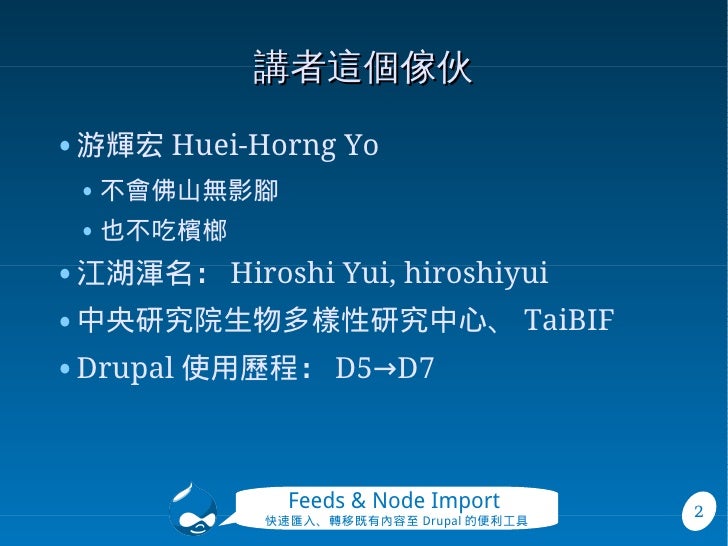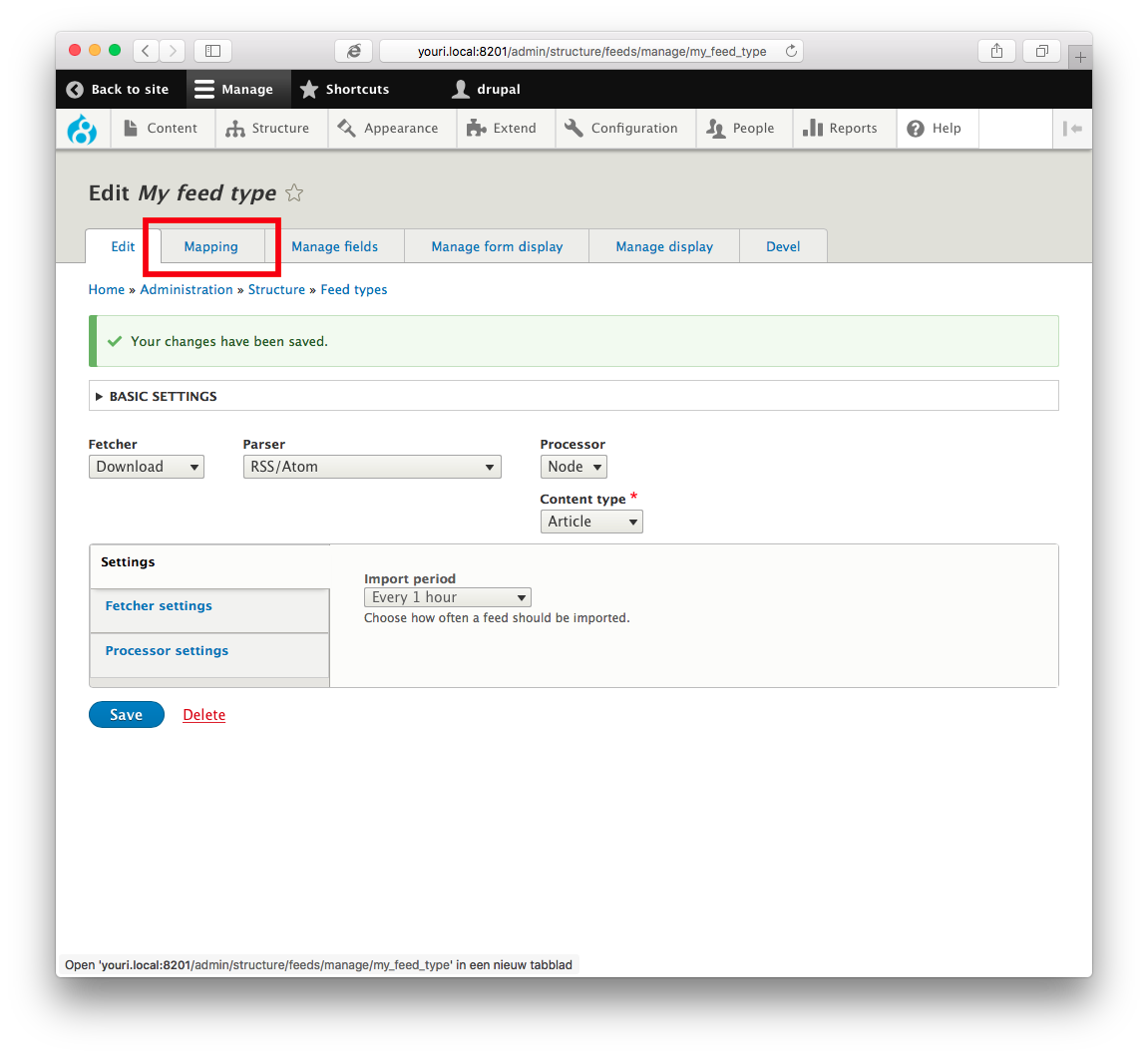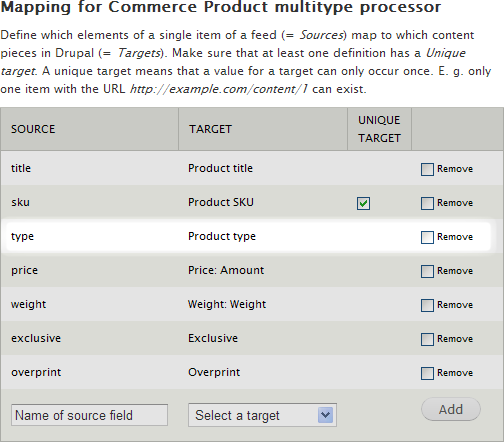


It provides a user interface for adding “tamper” plugins to the individual mapped fields of your Feeds importer, which can perform various data manipulation tasks such as splitting, combining, or rewriting data. The Feeds Tamper module is a contrib module for the Drupal Feeds module that allows you to modify data before it is imported. Use Feeds Tamper to manipulate imported data The imported content should now appear as nodes of the target content type within your Drupal site /admin/content.Upload your CSV file (If you configured file upload as your fetcher).Click on Import for the importer that you created previously.Import the data using the Feeds importer:.Click Save: This will save your mapping and other configuration settings.Tweak other configurations like language handling: This allows you to configure additional settings for your importer, such as how language should be handled.
#DRUPAL FEEDS VS FEED IMPORT UPDATE#
If a duplicate is found, the module can be configured to update or replace the existing item. Optionally, configure unique fields to avoid duplicate imports: This allows you to specify which fields should be used to determine if an imported item is a duplicate of an existing item.Then, in the “Source” column, select New CSV Source and enter the name of the column from your CSV file that contains the data you want to map to the selected target field.


You can choose to use the feed author as the owner or select a specific user. Owner: This setting allows you to specify the owner of the imported content. You can choose to never delete them or set a specific time period after which they will be deleted. You can choose to keep them or take some other action.Įxpire content items: This setting allows you to specify when content items should be deleted. Previously imported items: This setting allows you to choose what to do with items that were previously imported but are no longer present in the feed. The module will use the unique mappings you have set up to determine which content items are considered “existing” and should be updated or replaced. You can choose to update existing content items, not update them, or replace them entirely. Update existing content items: This setting determines how existing content items are handled when new data is imported. Language: This setting allows you to select the language for the imported content.


 0 kommentar(er)
0 kommentar(er)
